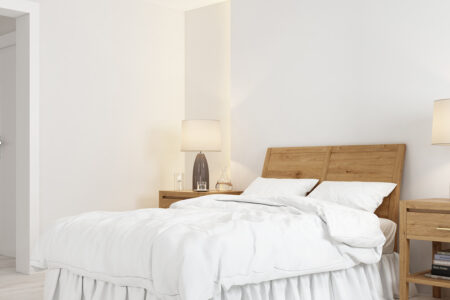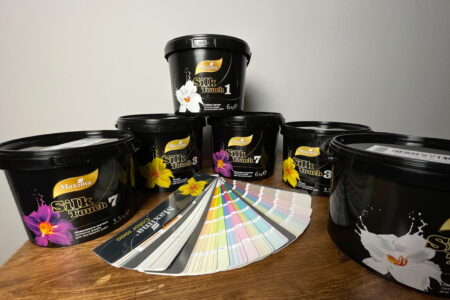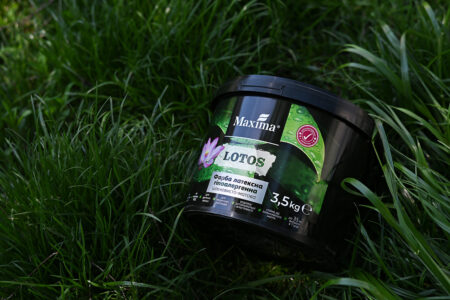Wall paint. How to choose paints for different rooms
Choosing wall paint is a task that looks simple at first glance. The market offers dozens of products: from classic acrylic compounds to modern moisture-resistant and hypoallergenic ones. Every option has its own characteristics, price and sphere of application. A choice mistake can result in a quick loss of surface attractiveness. There appear spots, cracks or even fungi.
It is important to understand what kind of wall paint corresponds definite premise to avoid odd expenses and despair. For example, you need moisture-resistant wall paint for a kitchen; hypoallergenic wall paint for a bedroom, wall paint that is maximally washable, and can resist repeated cleaning, for a hall.
Basic criteria to choose wall paint
Choosing paint always begins with an analysis of exploitation conditions. Even the highest quality material can behave badly if they are not intended for a definite purpose.
Purpose of the premise
Firstly, you should take into account the purpose of the room. All premises in the house or in the apartment have their specifics, and wall paint shall correspond to these conditions.
A kitchen. Here, the walls are impacted with steam, grease and repeated washing. That is why the optimal choice is latex wall paint, which is resistant to moisture and repeated cleaning.
A bathroom. You need a moisture-resistant wall paint, which prevents the growth of mould and fungi in high humidity conditions.
A bedroom. Eco-friendliness is important for the relaxation zones. The best option is to use hypoallergenic wall paint, which doesn’t emit toxic substances.
A baby room. The main requirements here are safety and wear resistance. Hypoallergenic and wearproof products are good for this purpose.
A corridor or a hall. These zones suffer from mechanical impacts, that is why you should choose washable wall paints.
A living room. This premise often plays a representative function. You can use acrylic as well as latex products here, which provide a beautiful decorative effect, and they are easy to keep tidy.
Thus, on the stage of the room purpose analysis, you can shorten the list of acceptable decisions.
Type of the surface
The second important criterion is the material of the base surface. Different surfaces interact with paint differently.
Plaster. The majority of paints are good to apply to prepared plastered walls. The main thing you must check is the surface condition. It must be dry and primed.
Concrete. Concrete walls demand hard and elastic compounds, for example, acrylic or latex ones. They hide possible microcracks and provide an even coating.
Gypsum boards. It is a widely used material for interior walls. The best option for this kind of base surface is latex wall paint, which creates a hard and elastic film.
Old wallpapers. They sometimes coated the walls with wallpaper on. In this case, it is better to use waterborne or latex compounds with a high level of coverage.
Gloss degree
Gloss degree is the characteristic of interior paints, which determines how glossy or matt the coated surface will be. Not only the appearance of walls depends on it, but also the practical use of the coating (washability, resistance to contamination, and mechanical impact).
Interior paints divides according the gloss degree into following categories:
- Dead Matt (Deep Matt)
• It creates mild, “velvet” effect.
• It perfectly hides uneven and defected surfaces.
• The disadvantage is that it less resistant to washing and contaminations than glossier options - Matt (Matte)
• It has slight light reflection abilities, close to total matt.
• It nicely hides defects but it is more resistant to cleaning than dead matt one. - Silky-matt (Eggshell)
• Smooth satin gloss.
• It reflects light, so it is better to use it on even surfaces.
• It is resistant to washing and wet cleaning. - Semi-gloss
• Sufficiently bright gloss.
• It is hard and resistant to washing. - Gloss
• Highly glossy, high light reflection.
• Maximal resistance to moisture, contaminations and mechanical impacts.
• It requires perfectly smooth surface because emphasizes all surface defects.
Types of wall paints
The modern market of finishing materials offers several options of paints, and each of them has its unique properties. To make a correct choice of wall paint, it is important to understand the differences between latex, acrylic, moisture-resistant, hypoallergenic, and durable solutions.
Latex wall paint
Latex paints are the choice for interiors, where durability, easy care and beautiful appearance are important. The base substance for these paints is a waterborne dispersion of synthetic latex, which provides a perfect hardness of the surface and resistance to abrasion.
Advantages of latex wall paints:
- Moisture resistance – many latex paints resist repeated washing.
- Wear resistance – they keep the coating solid even in hard exploitative conditions.
- Absence of solvent odor – it makes application easier.
- Wide choice of textures – from dead mat to smooth silky-matt gloss.
- Quick drying – it allows carrying out the renovation in the possible shortest term.
- Trade marks Farbex и Maxima are represented in several variations of latex paints, where each of them is adapted to specific exploitative conditions.
Popular products in latex paints Maxima, Farbex
Silk Touch 1 Maxima is dead matt paint, which is resistant to washing. It corresponds to the premises with moderate loading.
Silk Touch 3 Maxima is matt paint, which creates a smooth hard surface with washing resistance.
Silk Touch 7 Maxima is silky-matt paint, which is durable and resistant to repeated washing.
Megalatex Maxima is a washing-resistant latex paint, which was developed for areas with intensive exploitative loading. It is the flagship of washable and durable latex paint of this brand.
Mattlatex Farbex is a universal latex paint with matt effect is good for a wide range of living premises.
Lotos Maxima is a high-quality quality silky-matt latex paint, which is developed for living and public premises with advanced requirements for ecology. It has no volatile organic compounds in its formula. Due to the wax added to its content, it becomes water repellent and provides easy cleaning of contamination from the surface.
Hypoallergenic wall paint
Hypoallergenic wall paint is a special category of interior products, which is developed to be safe for health. This kind of paints doesn’t emit harmful substances and has no strong odor. It is perfectly intended for the use in the premises, where allergy sufferers, children and people with wit highly sensible to chemicals.
The main difference of hypoallergenic compositions is the absence of volatile organic compounds (VOC), formaldehydes, and other substances, which can provoke irritation of the respiratory system or even provoke allergic reactions.
LOTOS Maxima the very product in assortment of Maxima, which corresponds all hypoallergenic and ecological requirements. It is remarkable because it is safe for health and has no volatile organic compounds in its formula.
Latex paint LOTOS Maxima is intended for coating of walls and ceilings in baby rooms, medical, preschool and educational establishments, living and administrative premises, shopping and entertaining establishments and industrial premises.
Acrylic wall paint
Acrylic wall paint is one of the most popular and universal decisions in modern renovation. It combines hardness, eco-friendliness, and wide decorative potential. The base substances of these coatings are acrylic polymers, which provide good adhesion to the surface and a long-lasting result.
The main advantages of acrylic paints are:
- Wear resistance and wet abrasion resistance
- They dry quickly without strong odor.
- It is compatible with different surfaces – plaster, gypsum boards, wallpapers, wood, concrete.
Trade mark Farbex represents several acrylic wall paints, suitable for various tasks – from finishing living rooms to coating walls in public premises.
Farbex Interior is a basic acrylic interior paint, which is universal and affordable.
Farbex Wet Rooms is a special water-resistant wall paint, created for kitchens and bathrooms.
Moisture-resistant wall paint
Finishing the premises with high humidity like bathrooms, kitchens, laundries, or shower rooms, don’t use standard interior paints because they often don’t cope with loading. Constant contact with water, temperature fluctuation, and high humidity creates adverse conditions. The ideal decision for them is moisture-resistant wall paint, Wet Rooms Farbex. Acrylic paint Wet Rooms Farbex is intended for zones constantly in contact with water or steam. It creates the coating, which prevents moisture from penetrating. It is resistant to condensate and temperature fluctuation, and you can repeatedly wash it.
How to choose paints for different premises
The paint choice must be based not only decorative preferences but also on the exploitative conditions of the room. Various premises demand various characteristics – moisture-resistant, durability, hypoallergenicity or combination of several properties.

Paint for a bedroom
The atmosphere of comfort and health is important in a bedroom. The optimal choice for it is hypoallergenic paint for walls, which doesn’t emit harmful substances and cause no allergic reactions – Lotos Maxima. You can also use Silk Touch 1 Maxima or Mattlatex Farbex.
You can additionally take into account gloss degree: matt or silky-matt surfaces create cozy, calm interior.
Paint for a baby room
Baby rooms place higher demands on the safety and wear resistance of the coating. The optimal choice is hypoallergenic wear-resistant wall paint, for example, Lotos Maxima or silky-matt Silk Touch 7 Maxima.
Paint for a living room
A living room is a zone where aesthetics plays the key role. Here you can use as latex, so acrylic paints, following the desired gloss and decorative effect. Silk Touch 7 adds silky-matt gloss to the walls, so they look elegant and respectable. For a more sophisticated matt effect, use Silk Touch 3.
Paint for a hall
Corridors and halls are caused with higher mechanical load. That’s why here it is important wear resistant wall paint, which can easily bare friction, washing or accidental hits. Latex compounds Megalatex Maxima, Silk Touch 7 Maxima provide elastic coating, which lessen risk of cracking and provide safety of the surface during repeated washing the walls.
Paint for an office
In the offices, the walls are often in contact with furniture and technical facilities, that is why you should choose wear-resistant latex or acrylic paints.
Suitable products are Interior Farbex and Mattlatex Farbex, which guarantee you easy cleaning, as the walls in the offices are regularly cleaned of contamination. The most practical choice is Silk Touch 7 Maxima.
Paint for a public place
Schools, kindergartens, libraries and medical establishments demand safety and durable coatings.
The optimal choice is the combination of hypoallergenic and resistant wall paint, for example, Lotos Maxima for zones for children or Megalatex for corridors and common premises.
Paint for a sport complex
In highly visited zones with intensive load, the walls must resist frequent cleaning. We recommend you make a choice in favor of latex paints Megalatex Maxima or Silk Touch 7 Maxima, which provide a durable coating.
Paint for a bathroom
The key factor for a bathroom is moisture-resistant wall paint, which can resist mould and condensate.
Acrylic paint Wet Rooms Farbex creates a coating, which is easy to wash but prevents moisture penetration.
It is advisable to choose latex paint Silk Touch 3 Maxima or Silk Touch 7 Maxima, as both of them resist moisture very well. The difference is only in gloss degree and resistance to washing. Silk Touch 7 is more convenient to wash, and it keeps its gloss and hardness longer.
Paint for a kitchen
The walls in a kitchen are affected by grease and steam, which is why it is worthwhile to choose paints with protection against moisture and contamination.
Optimal options are latex wall paint Silk Touch 7 Maxima, Megalatex Maxima, or acrylic moisture-resistant paint Wet Rooms Farbex.
Pay attention to the surface: more glossy surfaces are easier to clean.

Paint for medical establishments and food manufacturing premises
The walls in these premises must be safe for health, easy to clean and resistant to disinfectants. Good choices are latex paints Lotos Maxima, Megalatex Maxima or Silk Touch 7 Maxima.
Thus, the choice of wall paint directly depends on the aim of the premise. The right combination of features – moisture-resistance, hypoallergenicity, washability provides long-lasting coating and comfort in the premise.
Making the choice easier, here is the table with the key characteristics of popular interior paints Maxima and Farbex.
| Series | Type | Gloss Level | Moisture Resistance | Wash Resistance | Recommended Spaces |
|---|---|---|---|---|---|
| Silk Touch 1 | Latex | Deep Matt | Medium | High | Bedroom, living room, ceilings |
| Silk Touch 3 | Latex | Matt | Medium | High | Bedrooms, kids’ rooms, living rooms, bathrooms, kitchens |
| Silk Touch 7 | Latex | Silky Matt | High | Very High | Living rooms, hallways, offices, bathrooms, kitchens |
| Megalatex | Latex | Matt | High | Very High | Hallways, offices, public spaces |
| Lotos | Latex | Matt | High | High | Kids’ rooms, bedrooms, medical facilities |
| Mattlatex | Latex | Matt | Medium | High | Living spaces, bedrooms, living rooms |
| Interior | Acrylic | Matt | Medium | Medium | Living spaces, offices, cottages |
| Wet Rooms | Acrylic (moisture-resistant) | Matt | High | High | Bathrooms, kitchens, toilets |
Wall paint choice is an important stage of every renovation or decoration. The aesthetic of the interior depends on your choice, and if it is right, the surface will last long and will be safe for the health and easy to take care of.
If you need latex paint, have a look at the series of Silk Touch Maxima, Mattlatex, Meglatex and Lotos. These products provide hard, elastic and durable surface, which is easy to wash and suit to various exploitative conditions: from living rooms to public premises.
For the premises with high humidity, we recommend moisture-resistant wall paint, for example, Wet Rooms Fabex. It protects the walls against steam, mould and condensate, holding color and texture of the surface unchanged.
For baby rooms and medical premises you should use hypoallergenic wall paint, like Lotos Maxima, which minimizes risk of allergic reactions and doesn’t emit toxic substances.
10.11.2025

